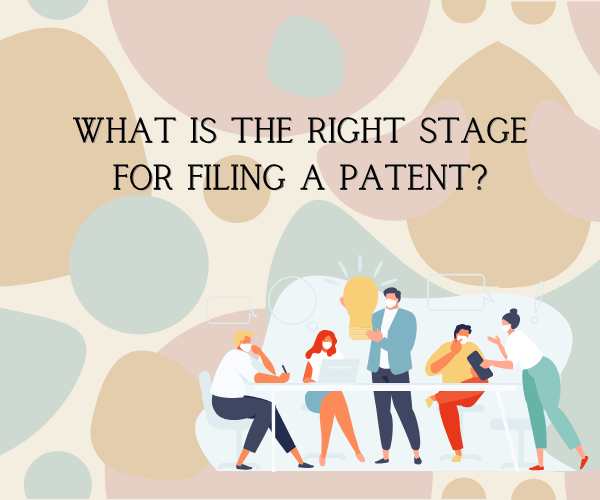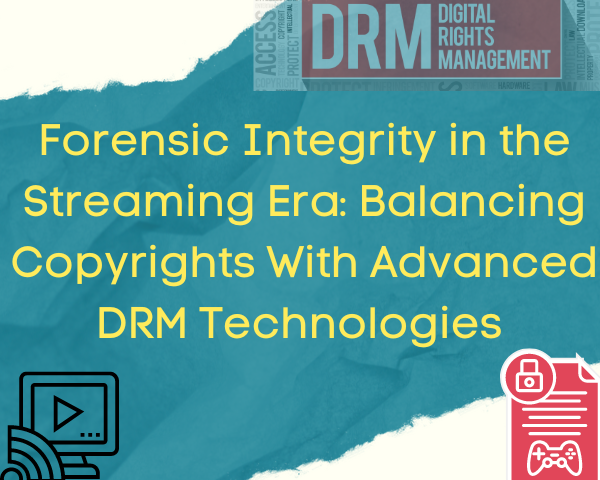The sine qua non of an invention is its conception. However, something more than conception is required for an invention to be ready for patenting. While the terms “something more” sound ambiguous, patent law provides insights into their interpretation which includes the ability to be “reduced to practice”. There are two ways in which an invention may be reduced to practice. The first way, actual reduction to practice, is by actually building the invention so that it works and others can follow how it is built. The second way, i.e. constructive reduction to practice, is when the inventor can explain to a person of ordinary skill in the art in sufficient detail so that they may make use of the invention without requiring undue experimentation.
When an invention has reached the stage where it is reduced to practice, it is ready for patenting. There is always confusion among inventors as to when will be the ideal time for claiming a patent. There is a trend among inventors to claim a patent at the time of ideation itself, while at the same time people also try to apply for a patent after bringing an invention to the public domain. It is important to understand the best time to claim Patents for their inventions.
Patent system and exclusive right
First, let’s have an idea about the patent system and how it works in India. A patent provides an exclusive right to the inventor. An exclusive right however can be differentiated from a monopoly. To get a patent, technical information about the invention must be disclosed to the public in a patent application. In principle, the patent owner has the exclusive right to prevent or stop others from commercially exploiting the patented invention.
In other words, patent protection means that the invention cannot be commercially made, used, distributed, imported, or sold by others without the patent owner’s consent. Patents are territorial rights. In general, the exclusive rights are only applicable in the country or region in which a patent has been filed and granted, as per the law of that country or region. The protection is granted for a limited period, generally 20 years from the filing date of the application.
The ideal stage of filing
The disclosure of the information is one of the major requirements which have to be fulfilled to have a patent to be granted. Hence an important question that every inventor should focus on is whether they have sufficient information regarding their invention. It can be said that when a person has sufficient information it is the right time to apply for a patent, whereas on the other hand if the information gathered is not up to satisfaction, then the inventor should try focusing on gathering sufficient information regarding the information.
Before focusing on what constitutes sufficient information, it is important to look at the trend of claiming a patent in detail. A scarcity of information is faced at the ideation stage of the invention or the initial stage of research. Usually, inventors tend to apply for provisional specifications due to a lack of sufficient information. This is because of the misconception that provisional specification is an initial step towards obtaining a patent and it can be done with mere acknowledgment of invention. Hence applying even for provisional specification without proper information can be stated as the wrong time to file a patent. However, the requirement for providing sufficient information holds good for provisional application as it holds good for complete patent application.
It is not advisable for filing a provisional application, as opposed to a complete application, for the lack of adequate information. Instead, a person can opt for filing a provisional application if an inventor does not have adequate funds to hire a professional to draft a patent specification or does not have adequate time to have a complete patent specification drafted. Further, in some countries, there is a substantial difference in the government fee that is charged for a provisional and a complete patent application. Hence, one might wish to file a provisional application, and thereafter within 12 months file a complete patent application.
The most common problem with the inventors is the determination of the point at which the inventor should go ahead with filing a patent for their invention. A deeper dive into the matter brings up the question of whether they have enough details to proceed for the patent; or does the working model of the invention require perfection.
What is an invention disclosure?
An invention disclosure form is basically for the documentation of the invention. This is a means to document the particulars of your invention and submit it to the patent attorney who is filing your patent application. This is the primary step in disclosing an invention. It arranges the inventor’s thoughts about the invention. It has to be filled in a way so that the invention and its details are clear to the person who is unfamiliar with it.
Sufficient information to be added to the invention disclosure form
The invention disclosure form should be filed with utmost diligence. The major information to be incorporated is as follows:
- Description of the innovative idea/invention.
- The working of the invention, the applicant can also establish the industrial applicability of the invention if any.
- Description of the problem the invention is solving.
- The advantages of the innovative idea over others.
- Description of the elements or components of the invention.
- If required, drawings and sketches must be attached neatly on separate sheets. These must show the inventions clearly without any descriptive matter.
- Specification as to what part of the invention is novel.
- If the invention relates to an improvement on an existing product, the description should completely and specifically describe the invention, and precisely distinguish it from the closest prior art known to the applicant.
- The replaceable components and elements of the invention can be added.
- Possible embodiments as to place the invention differently. Basically, different variations of the same inventive concept are called embodiments.
Can I apply for a patent before inventing the prototype?
In certain cases, inventors wonder whether they can apply for a patent before creating a prototype. A prototype is an early sample model, or release of a product or system built to test a concept or assumption or to act as a thing to be tested and learned from. In this sense, an initial “prototype” is the first complete solution to the original challenge. During the patent application process covering a new invention, a prototype can be an excellent way to put your invention to test and gather valuable feedback from potential customers. Thus, depending on the product and the field of technology, the inventor must be able to fully and particularly describe the invention. He shall also be able to detail its operation, or the method by which it is performed.
Conclusion
There are instances when an inventor forgets important information about the invention, during those times the patent agent would help in collecting information that he missed out. All we need is sufficient details about how to implement the invention to proceed with patent filing for the invention. Therefore, it can be concluded that if the inventor believes that they have adequate information about the invention that would enable someone with ordinary knowledge in the field to use the invention, they should consider applying for a patent even before creating a prototype.
Additionally, it becomes imperative to note that in India the inventors lose the right to file a patent application if the proposed invention is made public before applying for a patent. On the other hand, the US provides a time limit of 12 months to file a patent application after the invention is made public. Hence if the inventor wishes to file a patent application in multiple countries, it is advisable to explore the option of filing a patent application before the proposed invention is made public.
If the inventor who is accomplished in that particular art provides the patent attorney with essential cooperation by providing important details in the form, it further proves to be a key support to the patent counsel. Patent counsel will file the complaint based on the invention disclosure form. It is the responsibility of the patent counsel to prepare a complete disclosure of the invention. As a result of which the patent attorney will develop the wide- ranging claims possible without becoming an inventor.
Author: Febin P




